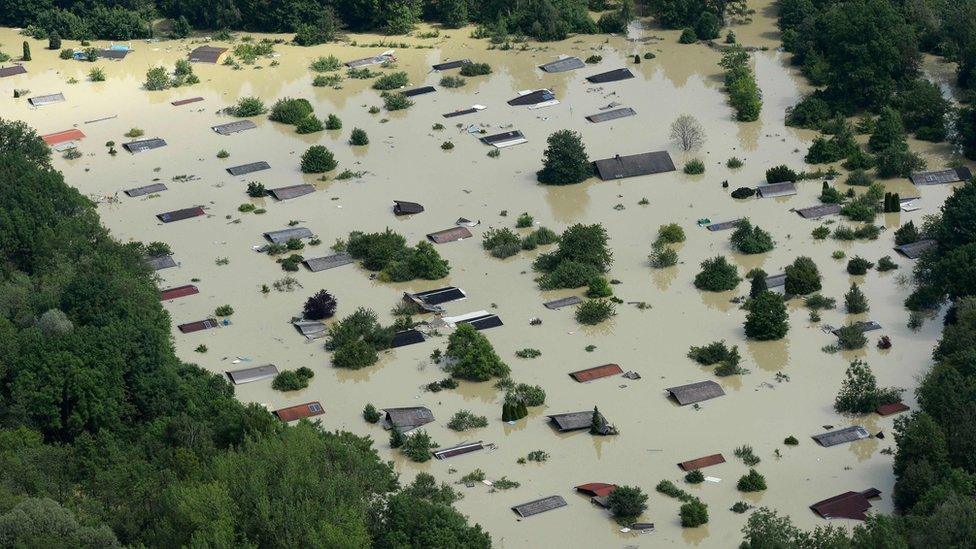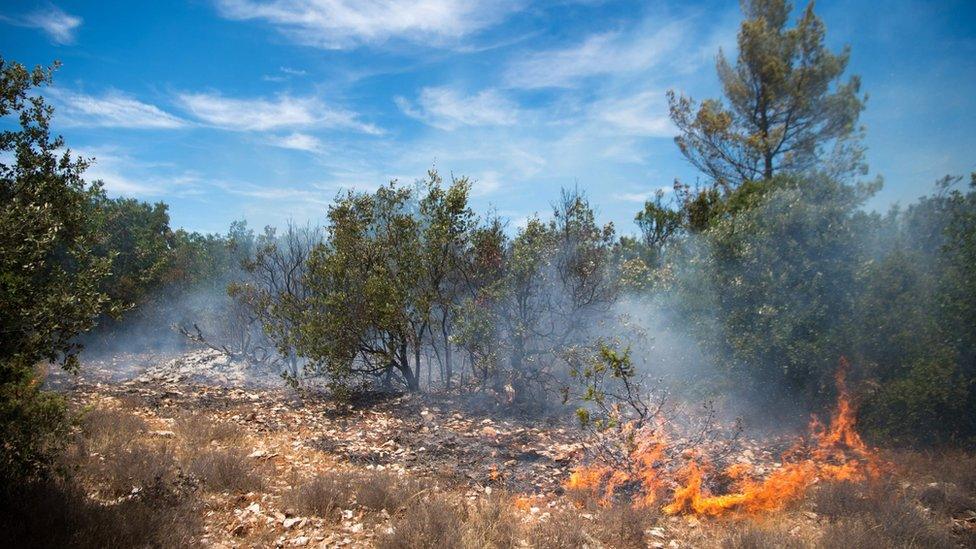Extreme weather 'could kill up to 152,000 a year' in Europe by 2100
- Published

Heat waves will cause most weather-related deaths if measures are not taken, the study says
Extreme weather could kill up to 152,000 people yearly in Europe by 2100 if nothing is done to curb the effects of climate change, scientists say.
The number is 50 times more deaths than reported now, the study in The Lancet Planetary Health journal said.
Heat waves would cause 99% of all weather-related deaths, it added, with southern Europe being worst affected.
Experts said the findings were worrying but some warned the projections could be overestimated.
If nothing is done to cut greenhouse gas emissions and to improve policies to reduce the impact against extreme weather events, the study, external by the European Commission's Joint Research Centre says:
Deaths caused by extreme weather could rise from 3,000 a year between 1981 and 2010 to 152,000 between 2071 and 2100
Two in three people in Europe will be affected by disasters by 2100, against a rate of one in 20 at the start of the century
There will be a substantial rise in deaths from coastal flooding, from six victims a year at the start of the century to 233 a year by the end of it
The research analysed the effects of the seven most dangerous types of weather-related events - heat waves, cold snaps, wildfires, droughts, river and coastal floods and windstorms - in the 28 EU countries as well as Switzerland, Norway and Iceland.
The team looked at disaster records from 1981 to 2010 to estimate population vulnerability, and combined this information with predictions of how climate change might progress and how populations might increase and migrate.
They assumed a rate of greenhouse gas emissions that would lead to average global warming of 3C (5.4F) by the end of the century from levels in 1990, a pessimistic forecast well above targets set by the Paris Agreement on tackling climate change.

Low levels of the Po River near Pavia in northern Italy
"Climate change is one of the biggest global threats to human health of the 21st century, and its peril to society will be increasingly connected to weather-driven hazards," said Giovanni Forzieri, one of the authors of the study.
"Unless global warming is curbed as a matter of urgency and appropriate measures are taken, about 350 million Europeans could be exposed to harmful climate extremes on an annual basis by the end of the century."

Flooding near the Bavarian village of Deggendorf in southern Germany in 2013

Fire rages through an area of woodland in Artigues in south-eastern France
On Friday, the United States issued its first written notification to the UN of its intention to withdraw from the 2015 Paris climate agreement.
US President Donald Trump drew international condemnation in June when he first announced his decision, saying the deal would cost millions of American jobs.
The Paris Agreement saw nearly 200 countries agree to keep warming "well below" the level of 2C (3.6F) above pre-industrial times and "endeavour to limit" them even more, to 1.5C
'People can adapt'
Experts from South Korea's Seoul National University warned that the study's results "could be overestimated".
"People are known to adapt and become less vulnerable than previously to extreme weather conditions because of advances in medical technology, air conditioning, and thermal insulation in houses," they wrote in a comment piece published in the same journal.
Paul Wilkinson, a professor at the London School of Hygiene and Tropical Medicine, who was not involved in the study, said the findings were "yet another reminder of the exposures to extreme weather and possible human impacts that might occur if emissions of greenhouse gases continue unabated.
"It adds further weight to the powerful argument for accelerating mitigation actions to protect population health."
- Published4 August 2017

- Published29 June 2017

